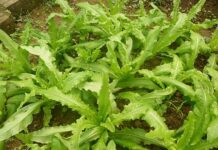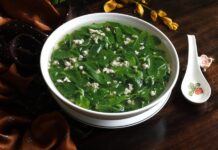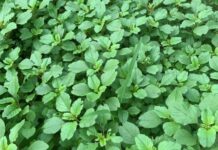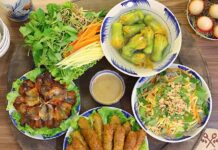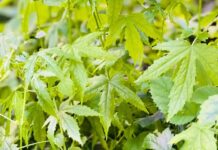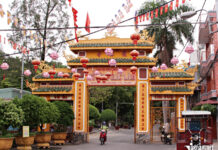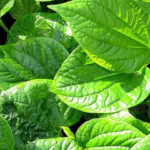The Amaranth leaf, or dền cơm leaf, is oval or slightly spear-shaped, with a light or dark green hue depending on the soil it’s grown in. A distinctive feature is its tiny flowers, which bloom in clusters in the leaf axils and stem tips, bearing minuscule ivory-colored seeds, resembling grains of rice, hence its name.
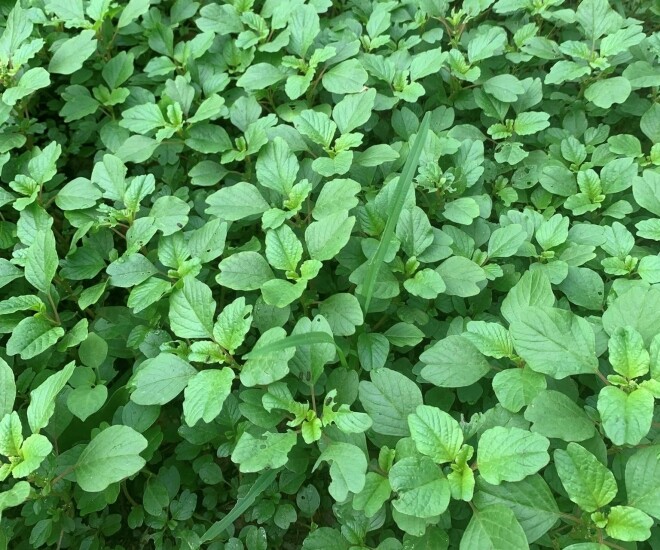
This vegetable is remarkably resilient and low-maintenance, adapting well to diverse climatic and soil conditions. In the past, dền cơm often grew wild along rice paddies and canals, and rural folks would gather it to feed their poultry and pigs or boil it to stave off hunger during lean seasons.
However, with the rising trend of consuming “green, clean, and unique” produce among city dwellers, dền cơm has undergone a remarkable transformation, emerging as a sought-after delicacy.

Flowers of the dền cơm plant.
Nowadays, dền cơm is readily available at local markets and organic food stores in urban areas. Prices range from 20,000 to 30,000 VND per kilogram, but pre-washed and pre-packaged dền cơm can fetch up to 50,000 VND per kilogram. Despite the relatively high price compared to other vegetables, it remains a favorite among consumers due to its distinctive refreshing, sweet, and mild flavor.
In traditional Vietnamese medicine, dền cơm is believed to possess cooling properties, aiding in heat reduction, diuresis, and detoxification. As a result, many individuals are willing to pay a premium for this vegetable, not just as a culinary ingredient but also as a natural remedy. Dền cơm can be prepared in various ways, including boiling, stir-frying, and making soup.

Cultivation and Care of Dền Cơm
Dền cơm is an easy-to-grow vegetable, adaptable to various soil types. While growers typically use dry seeds for sowing, the seeds are minuscule and should be mixed with ash or dry sand to ensure even distribution and prevent overcrowding, which can stunt growth.
Dền cơm can be cultivated year-round, but the main season with the best yield occurs at the onset of the rainy season, from April to June. During this period, favorable humidity and temperature conditions facilitate rapid seed germination and plant growth, with minimal pest and disease issues.
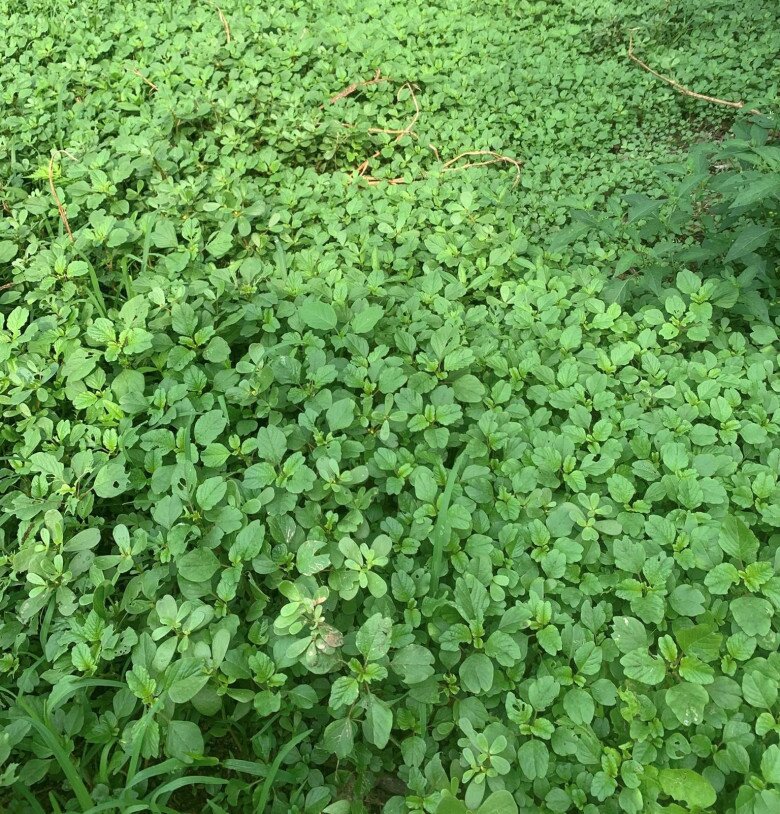
This plant thrives in loamy or sandy alluvial soil that is well-drained. Prior to sowing, it is advisable to enrich the soil with decomposed manure or organic microbial fertilizer to provide sufficient nutrients.
Once the soil is prepared, sow the seeds evenly along the furrows, covering them with a thin layer of soil, approximately 0.5 cm thick. Subsequently, use a gentle spray to moisten the soil, taking care not to oversaturate it. Avoid sowing too densely, as this will result in spindly plants with fewer leaves.
Dền cơm requires minimal maintenance. During the initial stages, water the plants once or twice daily, preferably in the early morning or late afternoon. About seven to ten days after germination, thin out the seedlings to provide adequate growing space and remove weeds, lightly cultivating the soil around the roots.

Approximately ten to fifteen days after sowing, apply a diluted solution of nitrogen and phosphorous fertilizer or organic bio-fertilizer to ensure lush, healthy growth and reduce the likelihood of pest and disease infestation.
Harvesting can take place after 20–30 days. When harvesting, use a sharp knife to cut the plants close to the ground. With careful harvesting, the plant will regrow from the same root, allowing for a second harvest after about 10–12 days.
4 French Women’s Eating Secrets for Ageless Beauty and a Sleek Silhouette as They Age.
The French woman’s diet is a mysterious and much-coveted concept. It conjures images of effortless elegance and a certain je ne sais quoi. But, behind this facade of nonchalance, there is a meticulous and laborious process. The French woman’s relationship with food is a delicate dance, a carefully curated balance of indulgence and restraint. This text aims to unveil the secrets behind this enigmatic diet and explore the intricacies that make it so desirable.
The Miraculous Benefits of Drinking Vối (Vietnamese Mint) Tea: 7 Reasons to Indulge
Introducing a beloved beverage of the Vietnamese, vối leaf tea. This humble brew is more than just a refreshing drink; it’s a treasure trove of health benefits waiting to be unlocked. Not many are aware of the powerful properties that a simple cup of vối leaf tea holds. It’s time to delve into the wonders of this traditional tonic and uncover why it deserves a special place in your daily routine.
The Ultimate Guide to Low-Pesticide Veggies: Two Unsung Heroes of the Garden
Introducing one of the easiest vegetables to grow, packed with essential nutrients – a star ingredient that needs no introduction. This humble vegetable requires minimal pesticide intervention and is a familiar favorite in many kitchens. With its versatility and nutrient-rich profile, it is a true hero in the culinary world.











